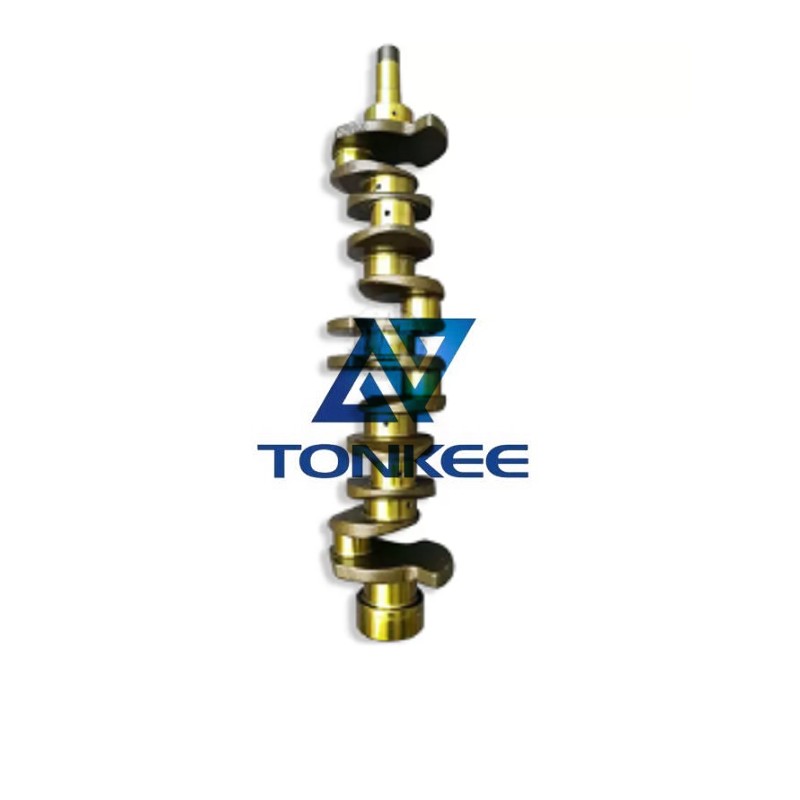
The crankshaft in Isuzu diesel engines is typically a robust, precision-engineered component made from high-quality materials, often alloy steel.
These materials are chosen for their strength, durability, and resistance to wear and fatigue. The design of the crankshaft is intricate, featuring a series of counterweights and journals that play a crucial role in converting reciprocating motion (up-and-down movement of pistons) into rotary motion (the rotation of the crankshaft itself).
Crankshaft Dimensions:
Crankshafts come in various sizes and designs to match the specific engine's needs. The dimensions of the crankshaft in Isuzu diesel engines, such as the 6BG1, 4BG1, and 4JB1, are carefully engineered to suit the engine's displacement, power output, and torque requirements. This includes the overall length, stroke length, and journal diameter, which are precision-engineered to ensure proper clearance and alignment with other engine components.
Journals and Bearings:
The crankshaft is equipped with journals at various points along its length, and these journals connect to the engine's connecting rods. The precision design of these journals is essential to ensure smooth movement and minimize friction, which is crucial for engine efficiency and longevity. High-quality bearings, typically made from durable materials like babbitt or steel-backed aluminum, are used to reduce friction and support the rotating assembly, allowing for efficient power transfer from the pistons to the crankshaft.
Counterweights:
The counterweights integrated into the crankshaft's design serve multiple purposes.
They help balance the rotating assembly, reducing vibration and minimizing stress on engine components. Balancing is essential to the engine's smooth operation and to prevent unnecessary wear and tear. Additionally, counterweights contribute to rotational inertia, helping to maintain engine speed and provide a smoother power delivery.
Surface Finish:
The surface finish of the crankshaft is another critical factor. The crankshaft's surfaces must be meticulously machined and polished to reduce friction and ensure a proper seal with the engine's bearings. This attention to surface finish contributes to the crankshaft's longevity and the overall efficiency of the engine.
Dynamic Balancing:
Each crankshaft undergoes a dynamic balancing process during manufacturing to ensure that it is free from vibration, which can lead to engine damage and reduce performance. Dynamic balancing involves fine-tuning the distribution of weight across the crankshaft, which helps maintain engine smoothness and minimizes stress on the rotating assembly.
Durability and Reliability:
Isuzu is known for producing robust and reliable diesel engines, and the crankshaft is no exception. The design and material selection ensure that the crankshaft can endure high-stress conditions, withstand continuous operation, and provide long-lasting performance. Isuzu engines, including the 6BG1, 4BG1, and 4JB1, are commonly used in demanding applications like construction equipment, generators, and trucks, where reliability and durability are paramount.



 English
English Русский язык
Русский язык



